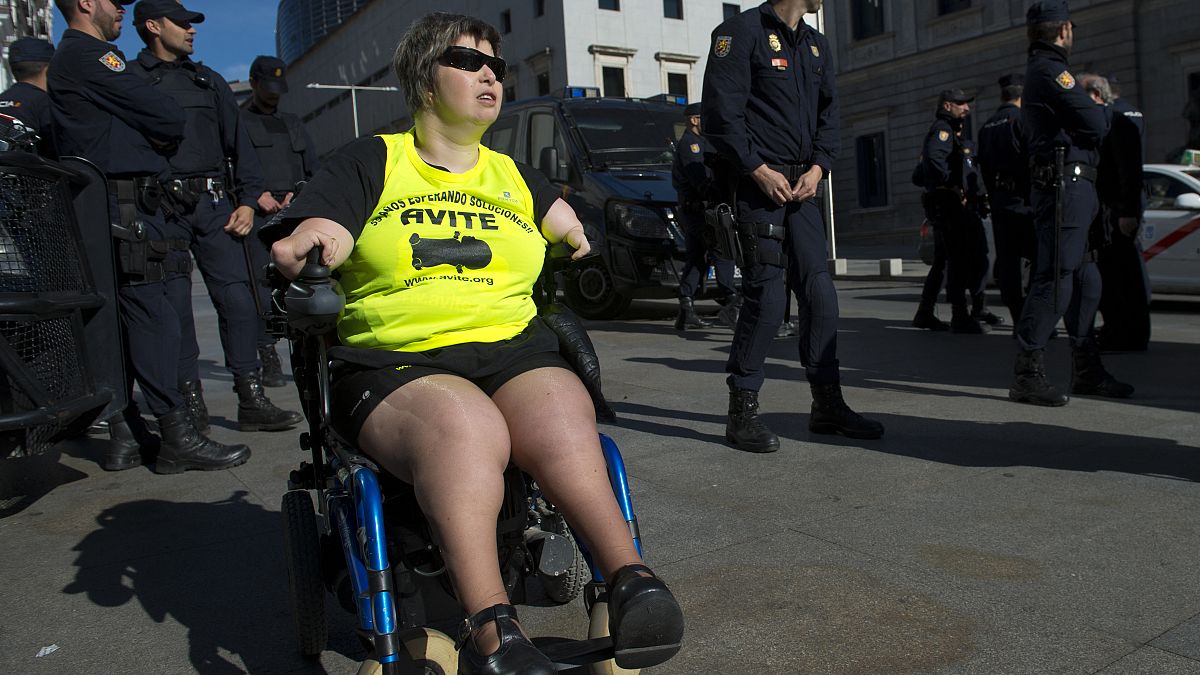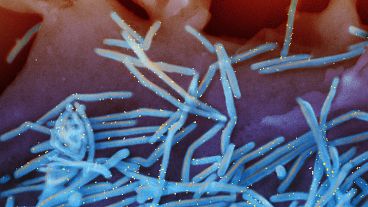The Australian government issued formal apologies to victims of thalidomide this week. In Europe, the recognition of victims has been heterogeneous.
Irish survivors of thalidomide - a drug prescribed worldwide during the 1950s and 1960s - have demanded an apology from the government following one issued by Australia to victims on Wednesday.
"We dare to dream Ireland will follow suit and allow us long overdue closure to a tragedy not of our making and allow the tiny cohort of previously unacknowledged survivors here to be brought in from the cold," Finola Cassidy, spokesperson for the Irish Thalidomide Association, told newspaper the Irish independent.
She added that the country - which has an estimated 40 survivors - failed to withdraw the drug in 1961 following concerns raised about its effects.
Euronews Next has contacted the Irish government for comment.
The move comes after Australia made a historic decision to apologise for the scandal which impacted an estimated 20,000 people worldwide in the mid-20th century.
"We owe apologies to Australians harmed by thalidomide," said Prime Minister Anthony Albanese, addressing survivors in Australia's House of Representatives on the 62nd anniversary of its withdrawal from the market.
"Today, Australia will finally offer its apologies," he added. "These apologies relate to one of the darkest chapters in our history".
In Europe, the thalidomide scandal caused major changes in pharmaceutical regulation.
But how deep was the impact of the drug on European women and children and where do countries stand on official recognition of the damage it inflicted on people’s lives?
Babies with severe malformation of limbs
Developed by the Swiss pharmaceutical company CIBA in 1953, thalidomide was presented as a harmless alternative to barbiturates.
Initially designed as a sedative or tranquilliser, its application quickly expanded to treat various ailments such as colds, flu, nausea, and morning sickness in pregnant women.
It was distributed in 46 countries in the 1950s and 1960s, with the notable exception of the United States as the FDA never gave its approval.
In Australia, a midwife named Pat Sparrow started to have concerns. She and her hierarchical superior - Dr William McBride - sent a letter to the scientific journal The Lancet in 1961 observing a high rate of birth defects in pregnant women who had taken the drug.
Their observations were soon corroborated by other reports of children born with phocomelia, a condition characterised by the absence or severe malformation of limbs, and the drug was quickly withdrawn.
10,000 to 20,000 cases worldwide
Globally, between 10,000 and 20,000 babies were affected by the drug, according to estimations. Moreover, the drug led to miscarriages, stillbirths, and infant deaths, which have been even more difficult to quantify.
In pre-reunification Germany, the drug was only authorised in the West. Pharmaceutical company Grünenthal bought the product from CIBA and marketed thalidomide under the brand name Contergan. It was sold over the counter.
Over 5,000 German children were affected. Grünenthal executives faced legal challenges in 1968. The company apologised in 2012.
"We also apologise for the fact that we have not found the way to you from person to person for almost 50 years. Instead, we have been silent and we are very sorry for that," Harald Stock, Grunenthal's chief executive at the time, said.
Britain officially apologised in 2010 for the scandal and the Thalidomide Trust has financially supported 543 people.
Despite the drug's withdrawal from other European markets in 1961, thalidomide continued to be sold in Spain until the early 1980s.
The regulatory failures and a delayed acknowledgement of the drug's teratogenic effects left many victims without proper support and compensation.
Only two dozen people have received compensation from the Spanish government.
A group of survivors initially won a legal battle against Grünenthal, but the decision was later overturned on appeal in 2013 stating that it had no control over the national distributors illegally distributing drugs containing thalidomide.
One notable outlier in Europe is France where thalidomide never was distributed.
Changes in drug approval
In the aftermath of the scandal, governments across Europe implemented stricter regulatory frameworks for pharmaceutical development and testing.
For example, post-market surveillance systems were strengthened to continuously monitor drug safety and identify potential adverse effects even after a drug is approved.
The Swedish government, partnering with the World Health Organization (WHO), created the Uppsala Monitoring Centre in 1978.
The institution said that its foundation is “rooted in the international outcry after the tragic
birth defects” caused by thalidomide.
The European Medicines Agency (EMA) was also established in 1993 to provide a centralised drug approval and safety monitoring system.
The EMA now monitors EudraVigilance, a database that collects and stores reports of suspected adverse reactions to medicines from healthcare professionals, patients, and pharmaceutical companies.



